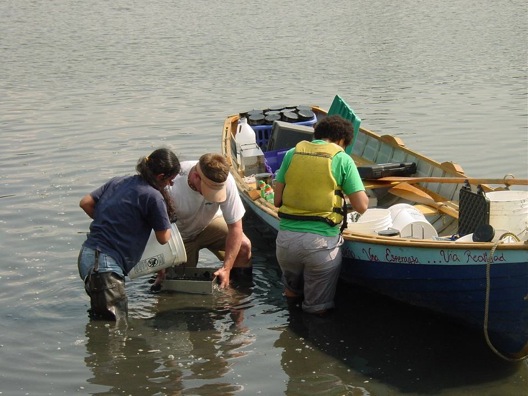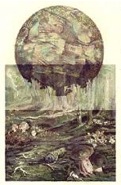
Aquatic Habitat Restoration and Benthic Invertebrate Sampling, Bronx River Tidal Zone
There is a potential to turn what is now biologically void space along the banks of the Bronx River into ecologically diverse habitat for fish and other aquatic plant and animal species that live - and have the potential to live - in this region. Presently, much of the stream bank along the tidal portion of the Bronx River is lined with corrugated sheet piling. Other than a small amount of algal growth, these surfaces do not hold much potential for contributing to habitat, unless modifications are made. The Gaia Institute is in the process of developing habitat structures made from recycled glass that can be placed within the sheet piling - avoiding obstruction of boat and barge traffic - that would greatly enhance the habitat quality of the current structure.
A benthic invertebrate biodiversity study was performed by the Gaia Institute, in collaboration with Dr. Robert Prezant, a recognized expert in invertebrate biodiversity and Dean of Natural Sciences at Montclair State University. This investigation took into consideration locations for macrophyte and invertebrate habitat along the bulkheaded area of the Hugo Neu Schnitzer property.
Dr. Prezant and his students surveyed benthic invertebrates during the summer and fall of 2003, and tallied a total of 17,257 organisms representing 35 species.
The five most dominant benthic invertebrates found in this study included, Streblospio benedicti (14,753), Scoloplos robustus (660), Oligochaetes (636), Eteone heteropoda (278), and Nereis succinea (268).
Aquatic Habitat Restoration and Benthic Invertebrate Sampling


(Photo: Students from Montclair State University performing the benthic sampling)
The Gaia Institute - 440 City Island Avenue - Bronx, NY 10464
